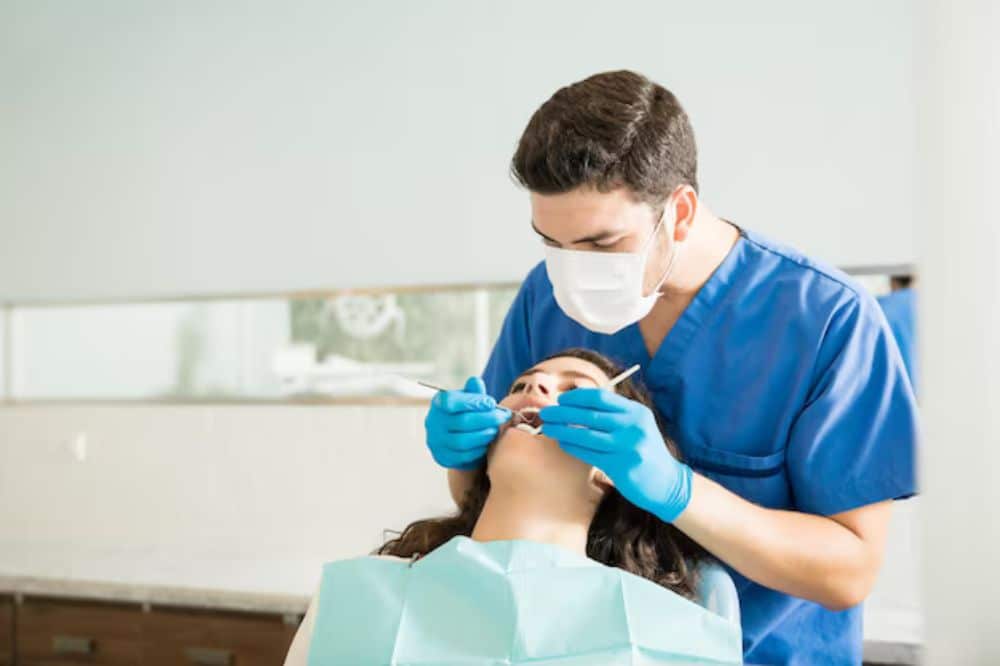Understanding the Connection Between Bone Health and Dental Implants
Dental implants are a popular and effective solution for replacing missing teeth. However, one factor that is sometimes overlooked is the need for sufficient bone density in the jaw. For dental implants to be successful, the bone in the jaw must be strong enough to support the implant. When bone loss occurs due to injury, periodontal disease, or aging, bone grafting becomes a crucial step in ensuring that dental implants have the foundation they need for stability and long-term success.
At Aria Dental Studio, we help patients in Vancouver understand the process of bone grafting and how it works alongside dental implants. If you’re considering dental implants but are unsure whether bone grafting is necessary, let’s explore the reasons why it might be required and how it can benefit you.
What Is Bone Grafting?
Bone grafting is a surgical procedure that involves adding bone or bone-like material to areas of the jaw that lack sufficient bone. This procedure is often done to rebuild the bone structure in preparation for dental implants. The goal of bone grafting is to provide a stable foundation for the implant so that it integrates properly with the surrounding bone.
Bone grafts can come from several sources:
- Autografts: Bone taken from your own body, usually from the hip or jaw
- Allografts: Donated bone from a deceased person
- Xenografts: Bone from animals, typically cows
- Synthetic bone: Man-made materials designed to mimic natural bone
The type of bone graft used will depend on your individual needs, and your Dentist in Vancouver will discuss the best options for your treatment plan.
Why Bone Grafting Is Necessary Before Dental Implants
Insufficient Bone Density
One of the most common reasons for needing bone grafting is insufficient bone density. When a tooth is lost, the jawbone in that area can begin to deteriorate over time. This bone loss is a natural process, but it can leave the remaining jawbone too weak or too thin to support a dental implant. In these cases, bone grafting is necessary to rebuild the bone structure and create a strong foundation for the implant.
Bone Loss Due to Gum Disease
Gum disease is another major contributor to bone loss. When gum disease is left untreated, it can affect the bone that holds teeth in place, leading to significant bone deterioration. If you have had gum disease in the past, you may require bone grafting to restore the bone before placing dental implants.
Bone Loss from Injury or Trauma
Trauma or injury to the jaw can result in bone loss, creating a need for bone grafting. In cases where teeth have been knocked out or fractured due to an accident, bone grafting can help restore the bone to its original structure and create a stable base for dental implants.
Aging and Natural Bone Resorption
As we age, bone resorption can occur naturally, especially in areas where teeth are missing. This process can lead to a loss of bone mass in the jaw, making it difficult for dental implants to be placed successfully. Bone grafting can be used to counteract this natural process and restore the bone density needed for implant placement.
How Bone Grafting Works
Bone grafting is typically a minimally invasive procedure performed in a dental office or surgical setting. Here’s a brief overview of what you can expect during the process:
- Consultation and Planning: Your Dentist in Vancouver will first evaluate your jawbone and determine if bone grafting is necessary. They will take X-rays or 3D scans to assess the quality and quantity of bone in the implant area.
- Graft Placement: The grafting procedure is done under local anesthesia. The bone graft material is carefully placed in the area where the bone is deficient. In some cases, a membrane may be placed over the graft to protect it and encourage new bone growth.
- Healing Time: After the procedure, it will take several months for the bone to heal and integrate with the graft. During this time, the bone will gradually grow and harden, preparing it for the dental implant.
- Implant Placement: Once the bone has healed and is strong enough, your dentist will place the dental implant. The implant will then fuse with the new bone in a process called osseointegration, ensuring that it remains stable and functional for years to come.
Benefits of Bone Grafting for Dental Implants
Increased Implant Success
Bone grafting ensures that your dental implants have a strong, stable foundation, which significantly increases the chances of successful implant integration. Without enough bone density, dental implants may fail, leading to additional complications and the need for further treatment.
Preserving Facial Aesthetics
Bone loss can lead to facial sagging, especially in the cheeks and jawline. By restoring the bone structure with bone grafting, you can maintain your facial appearance and prevent further bone loss. This is particularly important for patients who have experienced significant tooth loss.
Long-Term Durability
By preparing the jawbone for dental implants, bone grafting helps ensure that your implants will last for many years. This can save you time, money, and potential discomfort in the future, as it reduces the risk of implant failure or complications.
The Importance of Professional Care
At Aria Dental Studio, we are dedicated to providing you with the highest level of care. Our team works closely with you to ensure that every aspect of your treatment, from bone grafting to dental implants, is carefully planned and executed. We use the latest technology and techniques to make sure your procedure is as comfortable and successful as possible.
Take the Next Step Toward a Healthier Smile
If you’re considering dental implants but are concerned about bone loss, bone grafting might be the solution you need. Schedule a consultation with Aria Dental Studio today to learn more about how bone grafting and dental implants can help restore your smile and improve your oral health.



